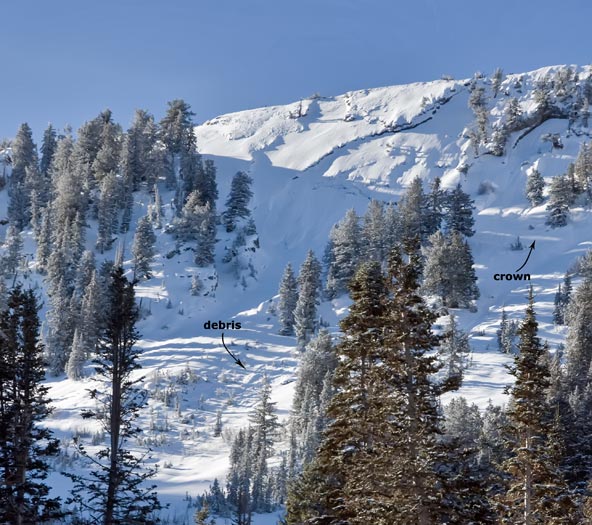
December 9
Porter Fork to main Porter to west Porter.
Elevations, slope angles and aspects
6200-9200', angles over 35°, Southeast through west facing aspects.
Snow conditions
3-10" new snow, elevation dependent, from yesterday's storm. The new snow was well bonded, with sluffing only on the steepest angles. That sluffing was occurring down to 7500', with cover at that elevation, consisting of new snow and a thin frozen crust over dirt. Light to medium densities. Warming was making the sun exposed off aspects a little sticky by afternoon. Surface hoar was noted, both early and late, at mid and lower elevations, on the shady side.
A number of localized collapses were felt on ascent, in shallow snow areas, mostly rocky or bushy.
Weather
Partly cloudy skies and cool temperatures, somewhat inverted, warmer at upper elevations. Winds, off the ridges were light and variable.
Avalanche activity
One natural was observed,

likely the result of sluffing from above.
Triggered a slide in West Porter. It was initiated by a collapse, felt when entering the drainage from the saddle, sliding in, to test the slope. The slide initiated 60-70' away in steeper terrain, slope angle 38°, plus or minus. The aspect was north facing, maybe a little west tilt, elevation 9200 at the saddle. 2-10" deep, 50 or so feet wide, running to the first flat, about 200' vertical. The November 29th rain crust collapsed on the thin layer of lighter density (now faceted)November 27 snow.
Photos
Crown, from below.
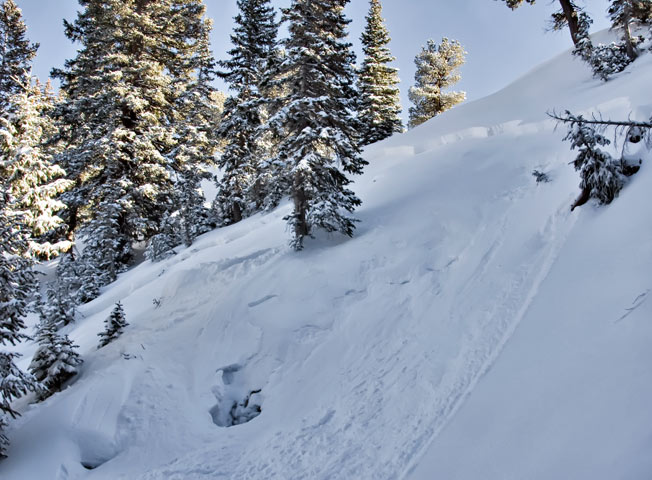
Panorama from the middle of the slide showing the looker's left flank.
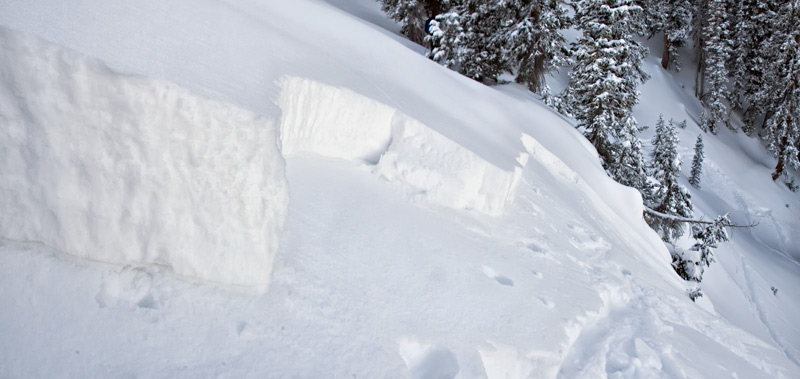
Snow pit, dug in the crown, showing the layering. Repeated testing produced one easy shear Q1 after another at the rain crust- light density interface.
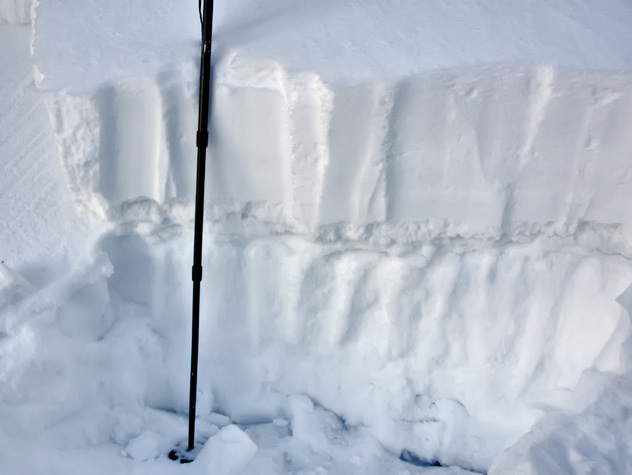
Zoomed
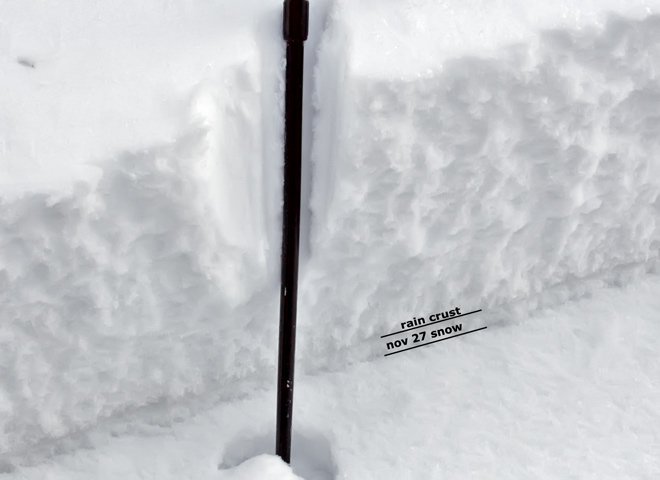
Rain crust revisited
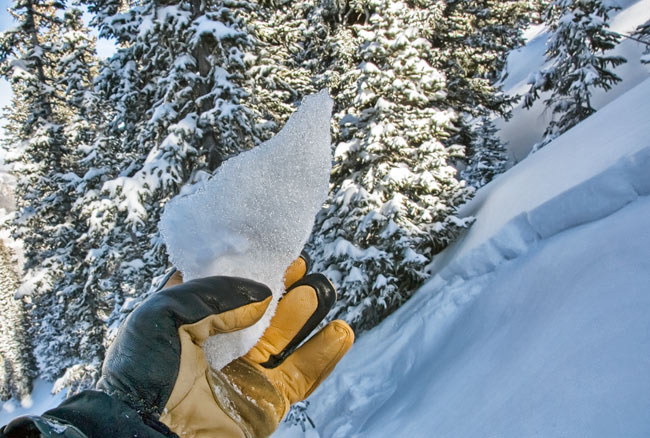
Snow pit
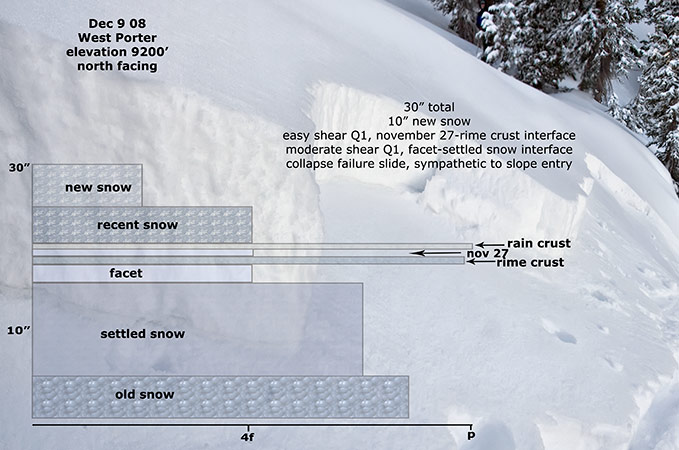
Evaluation
A teaser storm, less than an inch of water weight, confirms the threat of instability with significant loading. I'd imagine other locations will produce similar results to those illustrated above, with a trigger. Doubt the frequency is widespread, just here and there, until further loading occurs. Areas adding load from wind drifting, especially those with the crust- facet snowpack, on the shady side, are highly suspect. Cracking and or collapsing would be excellent indicates of instability.
© wowasatch.com